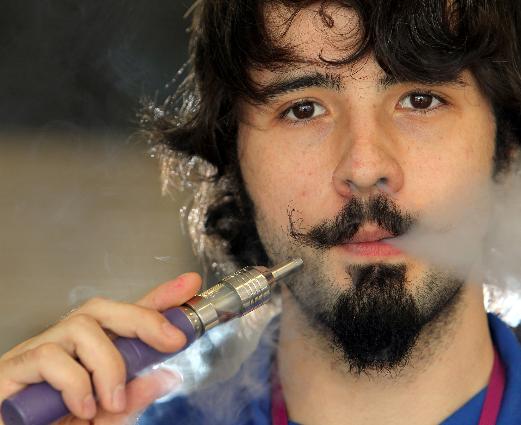MEDPAGE TODAY: E-Cigs Hamper Ability to Cough
Just one exposure significantly diminished cough reflex sensitivity.
by Nancy Walsh, Senior Staff Writer, MedPage Today
DENVER — Exposure to electronic cigarette vapors significantly diminished cough reflex sensitivity in a group of healthy volunteers, a researcher reported here.
Using a capsaicin cough challenge, the time until the concentration of capsaicin that can induce five or more coughs (C5) was significantly longer after an electronic cigarette “vaping” session, rising from a mean log C5 of 0.50 at baseline to 0.79 15 minutes after exposure (P<0.0001), according to Peter V. Dicpinigaitis, MD, of Albert Einstein College of Medicine in New York City.
“We have previously shown that chronic smokers of tobacco cigarettes have reduced cough reflex sensitivity to capsaicin compared with healthy nonsmokers, presumably on the basis of chronic cigarette smoke-induced desensitization of airway cough receptors,” he said.
“What impressed us in this study what that this was just one exposure, and there was a real effect, a significant effect,” he said in a press conference at the annual meeting of the American Thoracic Society.
Electronic cigarettes are increasingly popular devices that are intended to deliver vapor containing nicotine to the lungs without exposing the lung tissue to the damaging products of tobacco combustion. However, little is known about their effects on the respiratory system, and even less is known about their effects on the sensitivity of the cough reflex.
Cough sensitivity is important in that coughing is a very important protective mechanism for eliminating foreign particles, and suppression of this could render someone more susceptible to respiratory tract infection, he explained.
Capsaicin challenge has become a standard research tool for investigating the effects of various exposures on cough reflex sensitivity, in that the challenge is safe, dose-dependent, and reproducible.
To explore these effects, Dicpinigaitis and his colleagues enrolled 30 lifetime nonsmokers who each underwent a single session of vaping, which consisted of 30 puffs on a disposable device at 30-second intervals. This provided an exposure to nicotine of 1.5 to 1.8 mg, which approximates that of a single tobacco cigarette.
The effects on C5 were transient, as was shown by the fact that 24 hours after the exposure, there was a decline in mean log C5 to 0.55 (P=0.0002).
The clinical significance, if any, of this transient, acute effect and the consequences of chronic exposure remain to be elucidated.
But the take-home messages of the study, he said, were that the vapor in e-cigarettes is not simply a benign, inert vapor, and it may have not only this acute, peripheral effect, but it also may have a delayed central brain effect.
Also, the results raise the question of what might happen with prolonged, chronic exposure, given the physiologic effect of just one exposure, Dicpinigaitis added.

